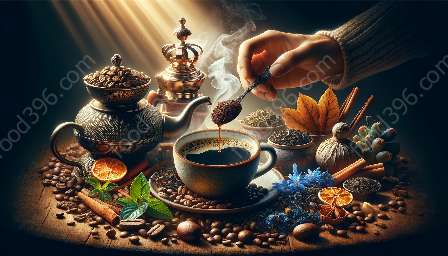Tea, a beverage that has captured the hearts and palates of people around the world for centuries, comes in a wide array of types and flavors. From delicate white teas to robust black teas, each variety offers a unique taste experience that can be enjoyed hot or cold. In this comprehensive exploration, we delve into the fascinating world of tea, examining its types, flavors, and the art of brewing. We also draw intriguing parallels with coffee and take a closer look at the cultural and sensory aspects of these beloved beverages.
Types of Tea
Tea is typically classified into several categories based on the processing method and the type of tea plant used. The major types of tea include:
- Green Tea: Known for its fresh, grassy flavor, green tea is made from unoxidized leaves and is rich in antioxidants.
- Black Tea: Strong and bold, black tea undergoes full oxidation, resulting in its characteristic robust flavor.
- Oolong Tea: With a flavor profile that falls between green and black tea, oolong is semi-oxidized, offering a diverse range of tastes and aromas.
- White Tea: The delicate and subtle white tea is made from young leaves and buds, with minimal processing, resulting in a light and delicate brew.
- Herbal Tea: Though not made from the traditional tea plant, herbal teas encompass a wide range of infusions, often celebrated for their soothing and medicinal properties.
Flavors and Aromas
The world of tea is a sensory delight, offering an array of flavors, aromas, and nuanced characteristics that can enchant even the most discerning palates. From floral and earthy to fruity and nutty, the flavors and aromas of tea are as diverse as the regions where they originate. Different types of tea and their unique processing methods contribute to the distinct profiles that each variety offers, resulting in an exquisite range of tastes to explore.
Comparing Tea and Coffee
Tea and coffee have long been cherished as the globe's most popular beverages, each with its own loyal following and cultural significance. While coffee is lauded for its bold, rich flavor and energizing effects, tea stands out for its subtle and diverse aroma, as well as its soothing properties. Both beverages offer distinct sensory experiences and are deeply rooted in tradition and ritual, adding a sense of ceremony to daily routines.
The Art of Brewing
The preparation of tea is a cherished art form, with each type requiring specific brewing techniques to unlock its full potential. Factors such as water temperature, steeping time, and the quality of the leaves all play crucial roles in achieving the perfect cup. Whether using traditional infuser methods or modern gadgets, mastering the art of brewing is essential to fully savor the flavors and aromas that each type of tea has to offer.
The Beauty of Tea from a Beverage Studies Perspective
From a beverage studies standpoint, tea presents an intriguing subject of exploration. Its rich history, diverse range of tastes, and cultural significance make it ripe for scholarly analysis. Understanding the sensory, social, and historical aspects of tea from a beverage studies perspective provides a holistic view that deepens appreciation for this ancient and beloved beverage.

